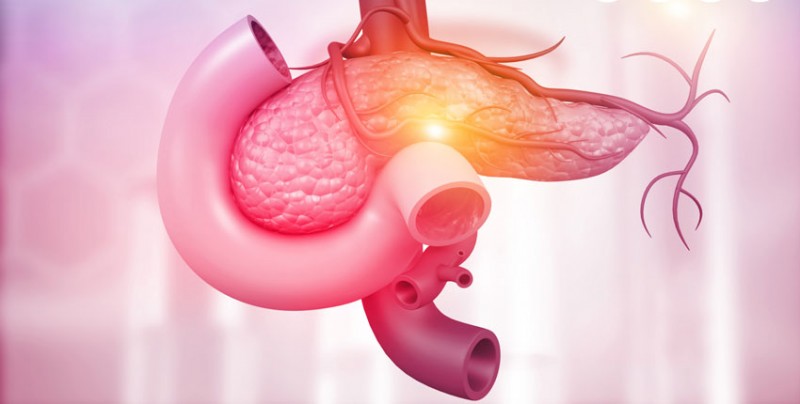Liquid Biopsy Shows Promise for Early Pancreatic Cancer Detection
 An investigational exosome-based liquid biopsy accurately detected 97% of stage 1-2 pancreatic cancers when combined with the biomarker CA 19-9, according to research presented at the American Association for Cancer Research (AACR) Annual Meeting 2024.
An investigational exosome-based liquid biopsy accurately detected 97% of stage 1-2 pancreatic cancers when combined with the biomarker CA 19-9, according to research presented at the American Association for Cancer Research (AACR) Annual Meeting 2024.
“Pancreatic cancer is one of the most fatal malignancies, in large part because the majority of patients are diagnosed only after the cancer has already metastasized,” said Ajay Goel, PhD, senior author of the study and the chair of the Department of Molecular Diagnostics and Experimental Therapeutics at City of Hope.
While the five-year relative survival rate for patients diagnosed at the earliest stages—before the cancer has spread from the pancreas—is 44.3%, it is only 3.2% for those diagnosed with metastatic disease. “It is of utmost importance to diagnose patients as early as possible, so they have the opportunity to receive potentially curative surgery and treatment,” Goel said.
Caiming Xu, MD, PhD, a postdoctoral fellow in Goel’s research group, added that early detection of pancreatic cancer remains challenging due to the nonspecific symptoms of the disease and because the pancreas is located deep within the abdomen, where it cannot be easily palpated during physical examination. Furthermore, existing biomarkers, such as CA19-9, are not reliable on their own to detect early-stage pancreatic cancer.
Goel, Xu, and colleagues explored the potential of an exosome-based liquid biopsy to detect pancreatic cancer at early stages. Liquid biopsies examine blood or other biological fluids for signs of cancer, such as genetic material or cells shed by tumors. The researchers developed a novel liquid biopsy approach that analyzed specialized vesicles called exosomes, which are shed by cancerous and healthy cells into blood. Exosomes shuttle molecular cargoes from one cell to another as a form of intercellular communication.
“Exosomes retain the cytoplasmic content of the cell from which they were shed, essentially replicating the biology of their tissue of origin,” Xu explained. The researchers identified eight microRNAs (small noncoding RNA molecules) that were uniquely found in exosomes shed from pancreatic cancers. They combined these with five cell-free DNA markers found in the blood of patients with pancreatic cancer to develop a signature associated with this disease.
The researchers previously tested the performance of their exosome-based liquid biopsy signature in a cohort of 95 individuals from either the United States or Japan, reporting a 98% pancreatic cancer detection rate. The latest study sought to evaluate the liquid biopsy in large, prospective cohorts from multiple institutions and countries.
The study enrolled individuals from Japan (150 with pancreatic cancer; 102 healthy donors); the US (139 with pancreatic cancer; 193 healthy donors); South Korea (184 with pancreatic cancer; 86 healthy donors); and China (50 with pancreatic cancer; 80 healthy donors).
The liquid biopsy signature was trained on information from the Japanese cohort and validated in the cohorts from the United States, South Korea, and China. Goel, Xu, and colleagues reported that their liquid biopsy approach detected:93% of pancreatic cancers in the U.S. cohort; 91% of pancreatic cancers in the South Korean cohort; and 88% of pancreatic cancers in the Chinese cohort.
Further, when they combined their signature with the pancreatic cancer marker CA19-9, the liquid biopsy test accurately detected 97%of stage 1-2 pancreatic cancers in the U.S. cohort. Stage 1 pancreatic cancers are confined to the pancreas; some stage 2 cancers have spread to nearby lymph nodes but have not spread to distant sites.
“We have established an exosome-based signature that combines exosomal microRNAs and cell-free DNA to robustly identify patients with early-stage pancreatic cancer,” said Xu.
“Our approach offers a liquid biopsy test superior to CA19-9 measurement alone for early-stage disease,” Goel added. “Moreover, we evaluated the effectiveness of our assay in several different populations, including populations of different ethnic and geographical backgrounds.”
While additional research is needed before this test can be deployed to the general population, the researchers noted that it might benefit certain groups with a high risk for pancreatic cancer, such as those with chronic pancreatitis, new-onset diabetes, or a family history of pancreatic cancer.
A limitation of the study was the limited number of Black individuals included in the study cohorts. Another limitation was the lack of an established microRNA control against which to normalize the levels of candidate microRNAs used to develop the signature.